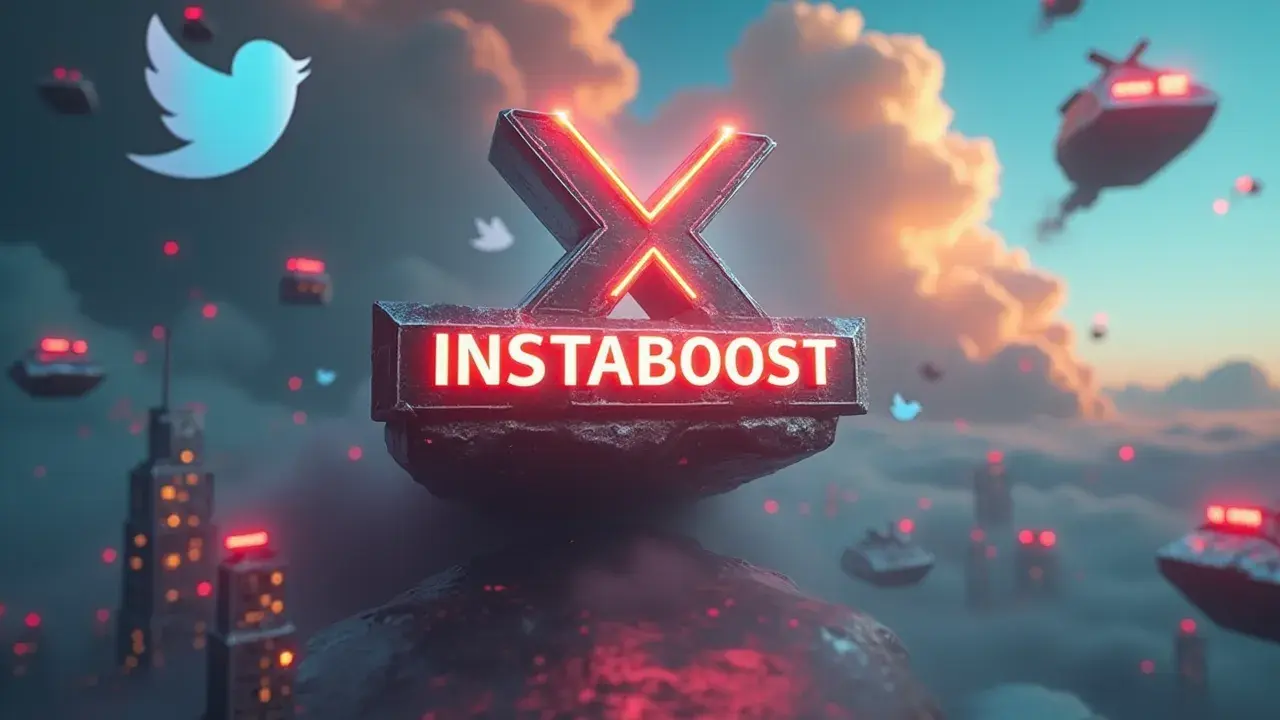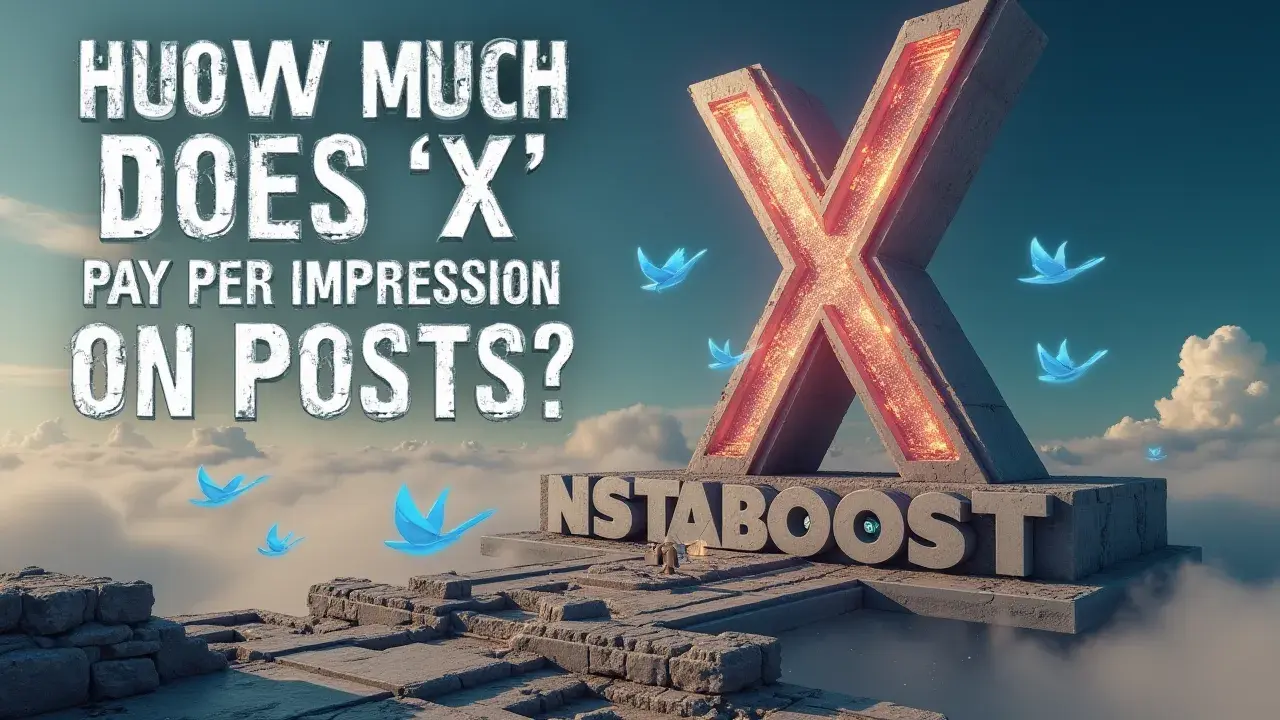How Much Does X (Twitter) Pay per Impression on Posts?
Payouts per impression on X (Twitter) fluctuate and depend on more than a single viral spike. Consistent week-over-week performance, stable audience mix, and sustained watch time tend to influence results more than raw view counts. Monitoring trends, flagging sudden dips, and aligning content with audiences that stay engaged after the initial burst can improve reliability. The smart path is to optimize for steady retention and timing, then measure incremental changes over time.
What “Pay per Impression” Really Means on X
Earnings on X aren’t a fixed coin-per-view meter. They shift with who sees your posts, when they see them, and what they do after that first glance. X shares a portion of ad revenue tied to impressions eligible for ads, so two posts with the same view count can pay differently if one reaches logged-in, high-intent audiences and the other leans toward drive-by traffic. If you’re asking how much X pays per impression on posts, the practical answer is a range that tightens as your data set grows and your audience mix settles. Think in terms of effective CPMs over rolling weeks, not a single screenshot.
It works when you pair consistent publishing with retention signals like real comments, follow-through reads, and profile taps. It also helps to add creator collabs and targeted promotion from reputable partners to spark early momentum without faking it. Clean analytics matter. Track week-over-week shifts by content type, geography, and session depth, and flag dips that follow changes in posting time or topic. The smart path isn’t chasing one viral. It’s building a repeatable loop where impressions are monetizable and compounding.
If you qualify for X’s monetization, set expectations by testing formats such as threads, short clips, and quote replies against audience segments, then back winners with modest, well-targeted boosts and clear safeguards for frequency and fit. Over a month, that gives you a dependable floor CPM and a high-water mark you can plan against. Search term to ground this: X ad revenue share and gain followers on Twitter.

Why Your Numbers Don’t Match Someone Else’s
Your strategy can be solid and still fall short if you assume a flat rate per view. X pays on eligible ad impressions, filtered by who saw them and whether those sessions were monetizable. That’s why “how much does X pay per impression on posts” keeps moving. Two posts with the same view count can earn differently if one reaches logged-in, high-intent users while the other leans on unqualified or international traffic with lower ad fill. The credible move is to benchmark against your own data, not screenshots. Track effective RPM week over week, tag posts by audience source like home feed, search, and quote retweets, and watch how RPM shifts as your audience mix settles.
Early momentum works when it attracts the right people. Replies with substance, saves, profile taps, and return visits are retention signals that lift eligibility and pricing. When you add paid accelerants, match them to intent. Small, targeted promotion from reputable placements or creator collabs that mirror your organic audience typically lifts RPM, while cheap broad boosts can inflate views and dilute eligible impressions. Keep your analytics clean by separating geos, device types, and time-of-day clusters so you can see where ad fill and CPMs rise. If you want a practical range, build it.
Run a 30-day testing loop, group posts by theme, and compute a median RPM band you can trust, then scale formats that hold attention and drive real comments. The non-obvious edge is consistency. One viral spike won’t set your baseline, but a month of steady, monetizable audiences will. That’s how you create a credible answer to “How much does X pay for views today?” for your account.
Build to Monetizable Views, Not Just Big Numbers
Most pivots are overdue corrections. Treat “how much does X pay per impression on posts” as a question about your mix, not your total. The real lever is stacking monetizable sessions with logged-in users, geos with active advertisers, and threads where people linger. You get that by shipping topics your core audience will finish, discuss, and return to, then adding measured acceleration. Use targeted promotion from reputable sources that match your follower graph and time it to when your audience is already active. Cheap boosts often swell views without increasing eligible ad impressions.
Pair every post with retention signals – a clear hook in the first line, a reason to scroll replies, and prompts that elicit real comments – because those behaviors feed the inventory that pays. Collaborate with adjacent creators to trade high-intent readers, not just raw reach. Co-authored threads and reply chains build sessions advertisers actually bid on. Keep a weekly testing loop. Segment posts by topic, format, and publish window. Track RPM on eligible ad impressions, not just view count.
Flag dips after algorithm changes and correct course within 72 hours. Clean analytics matter – UTM your cross-promotion, isolate paid vs. organic, and watch how long new cohorts stick. If you run ads or trials to seed early momentum, set safeguards with frequency caps, geos aligned to your buyers, and a stop-loss if RPM lags. The non-obvious edge is cadence. Consistent, medium-sized posts often compound better than sporadic virals because they focus your audience mix around monetizable habits, tightening your payout range over time, and selectively increase X likes without distorting your impression quality.
Stop Blaming the Rate – Fix the Mix That Triggers Payouts
I was told this would pass. It didn’t. That’s the point where many creators assume the platform is broken, when the real issue is that “how much does X pay per impression on posts” is shorthand for a chain of eligibility checks you’re only partly meeting. You can rack up views and still miss monetizable impressions if your traffic leans logged-out, low-retention, or outside active ad markets.
Fix the inputs that flip the ad switch. Build threads that hold attention long enough to trigger an ad load, reply where your core audience actually talks, and schedule when your followers are online, not when you are. Pair posts with targeted promotion from reputable sources to seed early momentum, with safeguards. Cap spend and track lift on monetizable sessions, not vanity reach. Creator collabs work when the partner’s audience overlaps your buyer or topic intent, and calibrate for Twitter video views that actually convert. If the overlap is thin, you inherit the wrong mix and dilute your RPM.
If payouts look erratic, run a seven-day testing loop with two formats, two hooks, and one call-to-discuss. Tag geos, session types, and retention signals in clean analytics so you can prune what attracts low-yield eyeballs. A practical path is to buy amplification only after an organic post clears a baseline of comments that aren’t bots and a dwell curve that flattens, because that’s a proxy for ad-serving viability. Sudden dips are a cue to check whether impressions shifted to unmonetized surfaces or to markets with thin advertiser demand before you rewrite the playbook. The non-obvious insight is that consistency beats spikes because ad systems reward stable, predictable sessions. Build toward monetizable views, then accelerate selectively – the rate per impression rises when your audience makes it easy for ads to actually show.
Close the Loop: Operationalize What You’ve Learned
Let the residue of this shape the next move. Treat “how much does X pay per impression on posts” as a weekly operating question, not a verdict. Ship, measure, and adjust in tight cycles. Focus on topics your core finishes, threads that earn real comments, collabs that bring in adjacent logged-in audiences, and targeted promotion that builds early momentum in geos with active advertisers. If you run paid boosts, stick to reputable, intent-matched sources and cap spend to sessions that convert into monetizable impressions. Cheap traffic with shallow retention drags averages and works when quality, fit, timing, and measurement align.
Build safeguards with clean analytics, UTMs on every accelerator, and a labeled testing loop that retires tactics that do not raise monetizable session share after two sprints. The rate is not a destiny – the mix is. Anchor your cadence to session depth and return visitors, not vanity view totals. When dips happen, audit eligibility checkpoints – brand safety, geography, device mix, and login status – before blaming the platform.
Then re-center on formats your audience actually finishes. Short, high-friction posts can beat long ramblers if they spark discussion and dwell time. Use creator collabs to cross-pollinate qualified followers, and sequence posts so each primes the next, compounding engagement. That is how impression-based payouts get predictable – consistent threads, qualified traffic, and measured acceleration, week over week. With this discipline, the answer to “how much does X pay per impression” gets less mysterious and more mechanical – your mix earns it. And when a viral outlier hits, the system catches and compounds it, turning a spike into a baseline.
Treat Payouts Like a Product You’re Shipping Weekly
If you’re still asking how much X pays per impression on posts, a better question is how reliably you can create monetizable sessions on demand. That starts with audience design. Seed posts to logged-in followers who finish, leave real comments, and return within 48 hours, then widen the circle through creator collabs that share adjacent but active ad markets.
Pair that with light, targeted promotion from reputable channels to spark early momentum in geos where advertisers are bidding this week, not last quarter. Build safeguards into your testing loop. Tag threads by topic, format, and geo, segment retention by first-hour and 24-hour windows, and run A/B hooks that vary the first two lines and the call to action. The rate you see is a composite of eligibility plus context, so instrument the context with clean analytics, UTMs on paid boosts, and benchmarks for finish rate and discussion depth. Spend is a lever when it amplifies signals you already earn organically. If a post isn’t holding the core, promote the next one, not the current.
Calibrate cadence to when your audience is online and advertisers are active, especially around seasonal spend spikes. And close the loop weekly. Retire themes that attract logged-out tourists, double down on threads where replies outnumber likes, and stack collaborations that consistently import logged-in readers. This is how payout per impression becomes predictable – by manufacturing the mix that triggers it and order traffic to Twitter.















